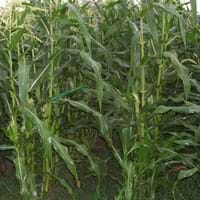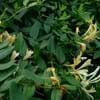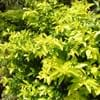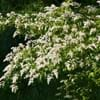Life Span
Perennial
Annual
Type
Flowering Plants, Shrubs
Vegetable
Origin
Eastern Asia
Hybrid origin, North America, Central America, South America
Types
Not Available
Not Available
Habitat
Barren waste areas, disturbed sites, Fields, Forests, Wet lands
Clay soil areas, Loamy soils, Sandy areas
USDA Hardiness Zone
4-11
Not Available
AHS Heat Zone
Not Available
12-4
Sunset Zone
Not Available
A1, A2, A3, H1, H2, 1a, 1b, 2a, 2b, 3a, 3b, 4, 5, 6, 7, 8, 9, 10, 11, 12, 13, 14, 15, 16, 17, 18, 19, 20, 21, 22, 23, 24
Habit
Cushion/Mound-forming
Upright/Erect
Flower Color
White, Yellow
Not Available
Flower Color Modifier
Bicolor
Bicolor
Fruit Color
Black
White, Yellow, Light Yellow, Peach
Leaf Color in Spring
Green
Green, Dark Green
Leaf Color in Summer
Green
Green, Dark Green
Leaf Color in Fall
Green
Green, Dark Green
Leaf Color in Winter
Green
Green, Dark Green
Leaf Shape
Oval
Long Linear
Plant Season
Summer
Spring, Summer, Fall, Winter
Sunlight
Full Sun, Partial shade
Full Sun
Growth Rate
Medium
Very Fast
Type of Soil
Well drained
Clay, Loam, Sand
The pH of Soil
Neutral
Neutral
Soil Drainage
Well drained
Well drained
Bloom Time
Late Winter, Spring, Summer
Indeterminate
Tolerances
Drought
Drought
Where to Plant?
Ground
Ground, Pot
How to Plant?
Layering, Seedlings, Stem Cutting
Seedlings, Transplanting
Plant Maintenance
Medium
Medium
Watering Requirements
Get enough water whenever the soil is dry
Average Water Needs, Do Not over Water, Needs watering once a week, Never Over-water, Over-head watering
In Summer
Lots of watering
Lots of watering
In Spring
Moderate
Moderate
In Winter
Average Water
Average Water
Soil Type
Well drained
Clay, Loam, Sand
Soil Drainage Capacity
Well drained
Well drained
Sun Exposure
Full Sun
Full Sun
Pruning
Remove dead or diseased plant parts
Remove damaged leaves, Remove dead branches, Remove dead leaves
Fertilizers
All-Purpose Liquid Fertilizer, General garden fertilizer
Nitrogen, Phosphorous, Potassium, Well-rotted manure
Pests and Diseases
Not Available
Aphids, Armyworm, Beetles, Flea Beetles, Leaf spot, Red blotch, Seedcorn maggot, Worms
Plant Tolerance
Drought
Drought
Flowers
Yes
Insignificant
Flower Petal Number
Single
Not Available
Foliage Texture
Not Available
Coarse
Foliage Sheen
Not Available
Glossy
Attracts
Bees, Birds, Butterflies
Aphids, Beetles, Not Available
Allergy
poisonous if ingested, Skin irritation
Asthma, Diarrhea, Headache, Nausea, Runny nose, Skin rash, sneezing, Vomiting
Aesthetic Uses
Showy Purposes
Not Used For Aesthetic Purpose
Beauty Benefits
Not Available
Not Available
Environmental Uses
Air purification, Food for birds
Food for animals, Food for birds, Food for insects
Medicinal Uses
Fever, Sore throat, Stomach aliments
Iron, Potassium, Vitamin C
Part of Plant Used
Flowers, Leaves
Kernel
Other Uses
Making Perfumes, Used as Ornamental plant, Used for its medicinal properties
Used as a nutritious food item, Used for its medicinal properties
Used As Indoor Plant
No
No
Used As Outdoor Plant
Yes
Yes
Garden Design
Container, Cutflower, Dried Flower/Everlasting, Groundcover, Mixed Border, Rock Garden / Wall
Edible, Herb, Vegetable
Botanical Name
Lonicera japonica
ZEA mays var rugosa
Common Name
Japanese Honeysuckle, suikazura, jinyinhua
Sweet Corn
In Hindi
जापानी Honeysuckle
स्वीट कॉर्न
In German
Japanese Honeysuckle
Mais
In French
Chèvrefeuille japonais
Le maïs sucré
In Spanish
madreselva japonesa
Maíz dulce
In Greek
Το ιαπωνικό αγιόκλημα
γλυκό καλαμπόκι
In Portuguese
Honeysuckle japonês
milho doce
In Polish
wiciokrzew japoński
Kukurydza
In Latin
CISSANTHEMOS Italica
Dulcis frumentum
Phylum
Magnoliophyta
Magnoliophyta
Class
Magnoliopsida
Liliopsida
Order
Dipsacales
Cyperales
Family
Caprifoliaceae
Poaceae
Clade
Angiosperms, Asterids, Eudicots
Angiosperms, Commelinids, Monocots
Tribe
Not Available
Andropogoneae
Subfamily
Not Available
Not Available
Number of Species
Not Available
Importance of Japanese Honeysuckle and Sweet Corn
Want to have the most appropriate plant for your garden? You might want to know the importance of Japanese Honeysuckle and Sweet Corn. Basically, these two plants vary in many aspects. Compare Japanese Honeysuckle and Sweet Corn as they differ in many characteristics such as their life, care, benefits, facts, etc. Every gardener must at least have the slightest clue about the plants he wants to plant in his garden. Compare their benefits, which differ in many ways like facts and uses. The medicinal use of Japanese Honeysuckle is Fever, Sore throat and Stomach aliments whereas of Sweet Corn is Iron, Potassium and Vitamin C. Japanese Honeysuckle has beauty benefits as follows: Not Available while Sweet Corn has beauty benefits as follows: Not Available.
Compare Facts of Japanese Honeysuckle vs Sweet Corn
How to choose the best garden plant for your garden depending upon its facts? Here garden plant comparison will help you to solve this query. Compare the facts of Japanese Honeysuckle vs Sweet Corn and know which one to choose. As garden plants have benefits and other uses, allergy is also a major drawback of plants for some people. Allergic reactions of Japanese Honeysuckle are poisonous if ingested and Skin irritation whereas of Sweet Corn have Asthma, Diarrhea, Headache, Nausea, Runny nose, Skin rash, sneezing and Vomiting respectively. Having a fruit bearing plant in your garden can be a plus point of your garden. Japanese Honeysuckle has no showy fruits and Sweet Corn has showy fruits. Also Japanese Honeysuckle is flowering and Sweet Corn is not flowering . You can compare Japanese Honeysuckle and Sweet Corn facts and facts of other plants too.





